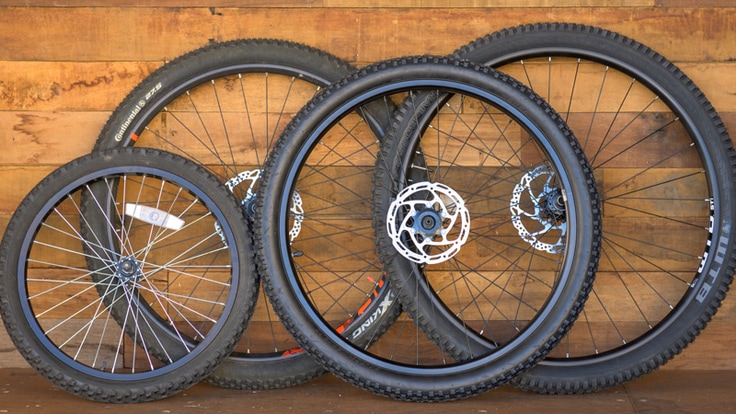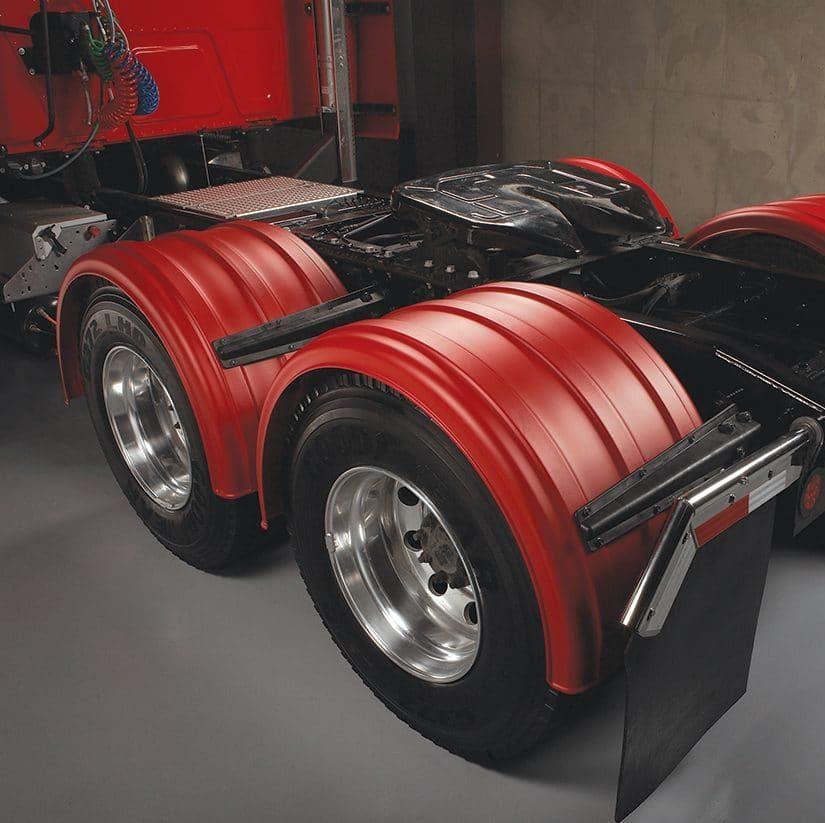The maximum tire size that can be used on a vehicle depends on the make and model of the vehicle, as well as the size of the wheel well and suspension. Generally, it is recommended to stick with the tire size specified by the manufacturer to maintain optimal performance, fuel economy, and safety.
Choosing the right tire size for your vehicle is an important decision to ensure proper handling, stability and safety. Using a tire that is either too small or too big can cause damage to your vehicle, reduce performance and affect fuel economy.
The maximum tire size is generally determined by the manufacturer, but it is also important to consider the available space within the wheel well and the suspension. Although it might be tempting to install larger wheels or tires for a sportier look, it is important to do your research and make an informed decision to ensure your safety and the longevity of your vehicle.

Credit: www.rei.com
Understanding Tire Fitment
The Importance Of Tire Size And Fitment
It is crucial to note that tires are responsible for carrying the vehicle’s weight, and their correct size and fitment determine the car’s overall performance. The size of the tire affects factors such as speedometer and odometer readings, gear ratio, and ground clearance.
Proper fitment ensures that the tire fits securely on the wheel without causing any damage and guarantees safe driving.
Common Terminologies Related To Tire Fitment
To understand tire fitment, it’s crucial to know common terminologies.
- Bolt pattern: It refers to the number and spacing of the bolts that hold the wheel onto a vehicle’s hub.
- Offset: It is the distance between the hub mounting surface and the centerline of the wheel.
- Aspect ratio: It signifies the height of the tire sidewall in comparison to the tire’s width.
- Load index: It displays the maximum weight the tire can carry when inflated to the recommended psi.
- Speed rating: This shows the maximum speed the tire can carry when under load.
Exploring Tire Size And Fitment Charts
Tire size charts provide comprehensive information about tire size, fitment, and compatibility. These charts help choose the best tire size, ensuring safe and efficient driving.
To read tire size charts, it’s essential to understand the three numbers written on the tire. Let’s take an example- p215/65r15.
- The first letter ‘p’ signifies the tire type, in this case, passenger.
- The number ‘215’ indicates the tire’s width from sidewall to sidewall in millimeters.
- The number ’65’ in the example is the aspect ratio or the height of the tire sidewall compared to its width.
- The letter ‘r’ denotes the tire’s construction type, in this case, radial.
- The last number ’15’ represents the diameter of the tire wheel in inches.
Using a tire size chart, you can determine the appropriate tire size and fitment for your vehicle. A properly sized tire ensures optimal vehicle performance and safe driving.
Factors To Consider When Choosing The Right Tire Size
How big a tire can i use – factors to consider when choosing the right tire size
Vehicle Manufacturer Recommendations
When looking for the right tire size for your vehicle, it is essential to start by checking the manufacturer’s recommendations. Most manufacturers provide a list of tire sizes that fit the vehicle, and using the recommended size will ensure that your vehicle performs as intended.
Here are some reasons why following the manufacturer’s recommendations is important:
- The recommended tire size is what the manufacturer tested for the vehicle. Hence it is the best option for your vehicle.
- Using a tire that is the wrong size will impact the car’s handling, braking, and overall performance.
- Tires that are too large or too small for your vehicle could cause damage to the vehicle’s wheels or suspension.
Performance Requirements
Tire size can have a dramatic impact on your vehicle’s performance. Different tire sizes can significantly impact handling, acceleration, and braking. Here are some things you’ll want to consider when choosing the right tire size for your car:
- A wider tire will give your car better traction, which makes it ideal for performance-oriented vehicles.
- A tire with a smaller aspect ratio can improve handling and steering response for performance cars, but it could also reduce ride comfort.
- If you frequently drive in wet or snowy conditions, a larger tire size may not necessarily be better. Instead, it’s better to look for tires specifically designed for those driving conditions.
Load Index And Speed Rating
Tire load index and speed rating are essential factors to consider when selecting the right tire size. Here’s why:
- The load index rating refers to a tire’s maximum load-carrying capacity. It is essential to choose a tire that can handle the maximum weight that your vehicle can haul.
- The speed rating refers to a tire’s maximum safe speed and is an essential factor to consider if you frequently travel on highways or roads with high speed limits. Ensure that the tire speed rating matches your car’s top speed.
- You can find the load index and speed rating for your tires on the sidewall of the tire.
Tire Aspect Ratio And Section Width
When choosing the right tire size, the aspect ratio and section width of the tire are also essential factors to consider. Here’s why:
- The aspect ratio is the ratio of the tire’s height to its width. Tires with a lower aspect ratio tend to provide better handling, but they could also provide a harsher ride.
- The section width refers to the width of the tire, which also impacts handling and road traction.
Ultimately, when selecting the right tire size, it’s essential to consider all of the factors we’ve discussed, as they will impact your vehicle’s overall performance, safety, and comfort. By following these guidelines, you’ll be able to choose the best tire size for your vehicle, ensuring a better driving experience.
Benefits Of Choosing The Right Tire Size
How big a tire can i use – benefits of choosing the right tire size
Choosing the right tire size for your vehicle is essential for a comfortable and safe ride. It not only makes your journey smoother but also plays a significant role in handling, stability, braking, fuel efficiency, and tire lifespan. Let’s take a closer look at the benefits of choosing the right tire size with the following headings:
Improved Handling And Stability
Proper tire size ensures better handling and stability of a vehicle, especially in emergencies. When traveling at high speeds, tires with the right size can handle the vehicle’s weight and acceleration efficiently, ensuring less swaying and better control. In contrast, when the tire size is too small or too large for your vehicle, it can lead to instability, poor handling, and higher chances of an accident.
Enhanced Braking Performance
Tire size affects the braking performance of a vehicle. With the appropriate size, the tire can provide the necessary friction required for proper braking. A tire with too small a size may not provide enough contact with the ground, causing the car to skid, while a tire that is too large may require more time to come to a halt.
Therefore, selecting the right tire size can significantly enhance your vehicle’s braking performance.
Increased Fuel Efficiency
Gas mileage is of utmost importance for vehicle owners. The right tire size can help you achieve better fuel efficiency, as it affects the rolling resistance of the car. Tires with a smaller size have less surface area touching the ground, which means they need less energy to roll, thus saving fuel.
Additionally, larger tires require more power to move your vehicle, leading to lower mileage.
Longer Lifespan Of The Tires
The lifespan of a tire depends on several factors, with tire size being one of them. When you use the appropriate tire size, it reduces the stress on the tire, ensuring even wear and tear, increasing its lifespan. However, when you employ a smaller or larger tire size, it creates undue stress, leading to uneven wear and tear, causing the tires to wear out quickly.
Selecting the right tire size can have a significant impact on your vehicle’s performance, fuel efficiency, and lifespan of the tires. Therefore, it is recommended that you consult with a professional to determine the optimum tire size for your vehicle.
Customizing Your Tire Size
Customizing your tire size can give you better performance, make your vehicle look better, and even improve your safety. But before upgrading, you need to understand the impact tire size has on your vehicle. Here are some key points to keep in mind:
Upgrading Your Tire Size For Performance Enhancement
If you are thinking about upgrading your tire size for performance enhancement, it’s important to note that you can increase your vehicle’s speed, acceleration, and traction. However, it is essential to choose the appropriate tire size to ensure it delivers the desired enhancements.
- Use wider tires to increase grip and traction.
- Choose a larger diameter tire to improve acceleration.
- Opt for a tire with a lower aspect ratio to improve handling.
Consequences Of Choosing A Larger Or Smaller Tire Size
Choosing the right custom tire size could bring a plethora of benefits, but choosing the wrong size could lead to harm. Thus, before jumping to upgrade, here are some things to keep in mind:
- Choosing a tire that is too large will result in the calibration of the speedometer being affected, which leads to more wear and tear on the vehicle’s suspension, exhaust system, and brakes.
- Choosing a tire that is too small will make the speedometer read faster than you are, which could lead to speeding ticket
How To Choose The Right Tire Size For Customization
Before choosing the appropriate tire size for your vehicle, there are some aspects you need to consider:
- Consult your owner’s manual or tire placard: The manufacture recommends specifications for tire size, including type, width, and aspect ratio.
- Opt for a tire size that matches the type of vehicle you own: The tire size you select will impact your vehicle’s driving performance.
- Consider the driving conditions and your driving style, too.
Choosing the right custom tire size could benefit you in many ways, but you need to be aware of the potential downsides. Keep these key points in mind when considering customizing your tire size.
Frequently Asked Questions Of How Big A Tire Can I Use
What Is The Largest Tire I Can Put On My Car?
The size of tire you can put on your car depends on various factors like wheel size, suspension, fender clearance, etc. Always refer to the owner’s manual or consult a tire professional before fitting a new set of tires.
Can I Put Bigger Tires On My Truck Without A Lift?
Yes, you can put bigger tires on your truck without a lift, but it depends on the size of your current tires, wheel size, and the terrain your truck will be driving on. Before upgrading your tires, consult a tire professional.
What Size Tires Can I Put On My Truck Without A Lift?
The tire size you can put on your truck without a lift depends on your truck’s make, model, and year. The best way to find out the maximum tire size is by consulting a tire professional, who can also recommend the wheel size and suspension adjustments if needed.
Conclusion
Therefore, the question “how big a tire can i use? ” does not have a straightforward answer. Ultimately, it depends on the vehicle and its capabilities. When seeking modifications to your vehicle, it’s important to consider a few factors such as performance, safety, and legality.
Keeping in mind the vehicle manufacturer’s recommendations, the tire’s diameter, width, and aspect ratio, you can make informed decisions about tire size. It is also important to note that when changing tire size, speedometer calibration and tire pressure monitoring system may also require adjustments.
So, if you are planning to maximize your vehicle’s performance with larger tires, be sure to do your research and consult a professional. Ultimately, a well-informed decision will help ensure that you can drive with confidence on the road while meeting legal and safety requirements.

